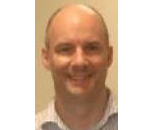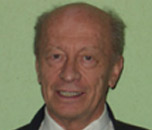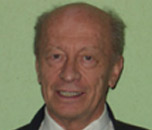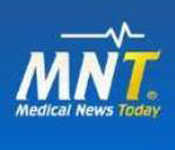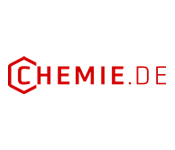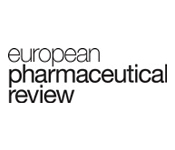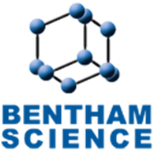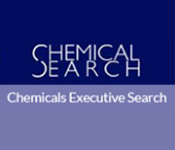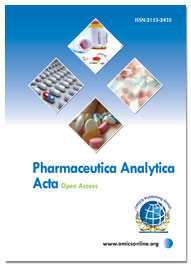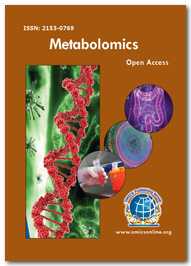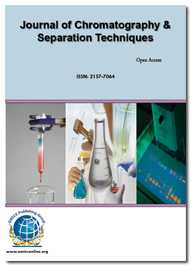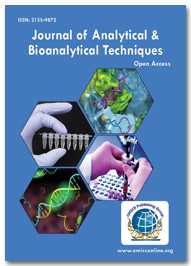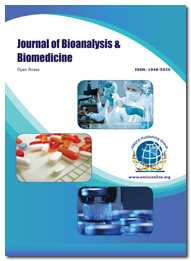Theme: Exploring the Widespread Applications of Chromatography and Unveiling Advances in HPLC
HPLC Congress 2016
Track 1: Advances in Various Chromatographic techniques
Chromatography is the method of separation of compounds from a mixture. The technique is both analytical and preparative and is employed widely in laboratory as well as industrial standards. More than 60% of chemical analysis all over the world is done with chromatography or a variation thereon. Chromatography is a physical technique applied from basic organic chemistry to Forensic sciences. Some common applications include detection of cocaine in urine, PCB’s in fish, alcohol in blood, and lead in water. Chromatography is of various types- Paper chromatography, displacement chromatography, thin layer chromatography, supercritical chromatography, Column fluid chromatography, gas chromatography, expanded bed adsorption chromatography, liquid chromatography in various combinations.
The increasing demand for monoclonal antibodies is driving the chromatography resin market globally. Chromatographic resins are used in separation and purification of proteins and other biomolecules in pharmaceuticals, food production, biotechnology, water and environmental analysis. Pharma and biotech industries are the largest consumer of chromatography resins followed by food production. North America has the highest market share of chromatography resins in terms of both consumption and revenue followed by Europe. The income from sales of resins in food production industry in North America is expected to record highest CAGR in the next five years. However, in Asian countries the chromatography resin consumption shows huge potential to grow in the pharmaceutical sector. The raising biosimilars market in emerging economies such as India, South Korea and China is expected to drive the chromatography resins market in the coming decade.
Column chromatography in chemistry is a method used to purify individual chemical compounds from mixtures of compounds. It is commonly used for preparative applications on scales ranging from micrograms to kilograms. The advantage of column chromatography is the relatively low cost and disposability of the stationary phase used in the process. Paper chromatography is a technique that involves placing a small dot or line of sample solution onto a strip of polar cellulose chromatography paper. The paper is placed in a glass chamber with a shallow layer of solvent and sealed. As the solvent moves through the paper, it contacts the sample mixture, which starts to rise up the paper with the solvent. Thin layer chromatography (TLC) is a widely employed technique which involves a stationary phase of a thin layer of adsorbent like alumina, silica gel, or cellulose on a flat, inert layer of substrate. TLC has the advantage of better separations, faster runs, and the choice of different adsorbents. Better resolution and quantification can be achieved with high-performance TLC.
Displacement chromatography is a chromatography technique in which a sample is placed onto the head of the column and is then displaced by a solute that is more strongly adsorbed than the components of the original mixture. As a result is that the components are resolved into consecutive rectangular zones of highly concentrated pure substances rather than solvent-separated peaks. It is primarily a preparative technique. Higher product concentration, higher purity, and increased throughput are obtained compared to other modes of chromatography.
Gas chromatography (GC) is a common type of chromatography used in analytical chemistry for separating and analysing compounds that can be vaporized without decomposition. In GC, the mobile phase (or "moving phase") is a carrier gas, commonly an inert gas such as helium or an unreactive gas such as nitrogen. Stationary phase is a microscopic layer of liquid or polymer on an inert solid support, within a glass or metal tubing called a column and the instrument used to perform gas chromatography is called a gas chromatograph (or "aerograph", "gas separator"). The gaseous compounds being analysed interact with the walls of the column coated with a stationary phase.
Supercritical fluid chromatography (SFC) is a separation technique in which the mobile phase is a fluid above and relatively close to its critical temperature and pressure. SFC typically utilizes carbon dioxide as the mobile phase; therefore the entire chromatographic flow path must be pressurized. Supercritical phase represents a state in which liquid and gas properties combine, Supercritical fluid chromatography is sometimes called convergence chromatography. Expanded Bed Adsorption (EBA) Chromatographic Separation captures a target protein from a crude feed stream when it passes through a chromatography column system containing adsorbent beads. Using this technique the unprocessed crude compound can be treated directly in the chromatographic column, avoiding clarification and pre-treatment steps. Supercritical fluid chromatography is a separation technique in which the mobile phase is a fluid above and relatively close to its critical temperature and pressure.
Related Conferences of Advances in Chromatography Techniques
International Conference and Exhibition on Analytical and Bioanalytical Techniques, September 29- October 1, 2016, Miami, USA; International Conference on Current Trends in Mass Spectrometry, May 9-11, 2016, Chicago, USA; World Chemistry Conference, August 8-10, Toronto, Canada; International Conference on Pharmaceutical Chemistry, August 4-6, 2016, Frankfurt, Germany; International Conference and Expo on Separation Techniques, October 31-November 2, 2016, Valencia, Spain; Winter Conference on Plasma Spectrochemistry, January 10–16, 2016, Tucson, Arizona; Characterization of Protein Therapeutics by Mass Spectrometry: Recent Developments and Future Trends, January 21–24, 2016, Clearwater Beach, Florida; International Forum on Process Analytical Chemistry, January 24–27, 2016, Arlington, Virginia; The Pittsburgh Conference on Analytical Chemistry and Applied Spectroscopy, March 6-11, 2016, Atlanta, Georgia; Annual Practical Applications of NMR in Industry Conference, February 15-18, 2016, Houston, Texas;
Track 2: Fundamentals and Advances in Liquid Chromatography Separation Techniques
Chromatography is a non-destructive procedure for resolving a complex mixture into its individual fractions or compounds. Chromatography is based on differential migration of solutes with the solvents. The solutes in a mobile phase go through a stationary phase. Those solutes with a high affinity for the mobile phase will spend more time in this phase than the solutes that prefer the stationary phase. As the solutes rise up through the stationary phase they separate, the process called chromatographic development. The fraction with greater affinity to stationary layer travels slower and shorter distance while that with less affinity travels faster and longer.
In normal-phase chromatography, the stationary phase is polar and the mobile phase is nonpolar. In reversed phase the stationary phase is nonpolar and the mobile phase is polar. Flash Column Chromatography (FCC) or Flash Chromatography is a quick and easy way to separate complex mixtures of compounds. FCC uses compressed air to push the solvent through the column. This helps provide better separation and reduces the amount of time required to run a column. Ion exchange chromatography (IEC) uses an ion exchange mechanism to separate analytes based on their respective charges. It is performed in columns but can also be useful in planar mode. IEC uses a charged stationary phase to separate charged compounds including cations, anions, amino acids, proteins and peptides. Conventional methods use stationary phase having an ion exchange resin that carries charged functional groups that interact with oppositely charged groups of the compound to retain. IEC is commonly used to purify proteins using fast protein liquid chromatography (FPLC).
Size-exclusion chromatography (SEC) is also known as gel permeation chromatography (GPC) or gel filtration chromatography and separates molecules according to their size or more accurately according to their hydrodynamic diameter or hydrodynamic volume. Small molecules enter the pores of the media where they are trapped and removed from the flow of the mobile phase. Mean residence time in the pores depends upon the effective size of the analyte molecules. Molecules that are larger than the average pore size of the packing are excluded and thus suffer essentially no retention; such species are the first to be eluted. It is a low-resolution chromatography technique and thus it is often reserved for polishing step of purification and is also useful for determining the tertiary structure and quaternary structure of purified proteins as can be carried out under native solution conditions.
Affinity chromatography is based on selective non-covalent interaction between an analyte and sample molecules. It is highly specific, but not robust. It is used in biochemistry in the purification of proteins bound to tags. Fusion proteins are labelled with compounds such as His-tags, antigens or biotin which bind to the stationary phase specifically. Later after purification, some of these tags are removed and the pure protein is obtained. Affinity chromatography utilizes a biomolecule's affinity for a metal (Zn, Cu, Fe, etc.). Columns are often manually prepared. Earlier affinity columns are used as a preparative step to flush out unwanted biomolecules. Some HPLC techniques utilize the properties of affinity chromatography. IMAC- Immobilized Metal Affinity Chromatography is used to separate aforementioned molecules based on the relative affinity for the metal. Often these columns can be loaded with different metals to create a column with a targeted affinity.
Chiral chromatography includes the separation of stereoisomers. Enantiomers have no chemical or physical differences apart from being three-dimensional mirror images. Traditional chromatography or other separation processes are incapable of separating these. For chiral separations to happen, either the mobile phase or the stationary phase must themselves be made chiral by inducing differing affinities between the analytes.
Related Conferences of Advances in Liquid Chromatography Separation Techniques
International Conference and Expo on Separation Techniques, October 31-November 2, 2016, Valencia, Spain; International Conference and Exhibition on Analytical and Bioanalytical Techniques, September 29- October 1, 2016, Miami, USA; International Conference on Current Trends in Mass Spectrometry, May 9-11, 2016, Chicago, USA; World Chemistry Conference, August 8-10, Toronto, Canada; International Conference on Pharmaceutical Chemistry, August 4-6, 2016, Frankfurt, Germany; Eastern Analytical Symposium and Exposition, November 14-16, 2016, Somerset, New Jersey; Characterization of Protein Therapeutics by Mass Spectrometry: Recent Developments and Future Trends, January 21–24, 2016, Clearwater Beach, Florida; International Forum on Process Analytical Chemistry, January 24–27, 2016, Arlington, Virginia; The Pittsburgh Conference on Analytical Chemistry and Applied Spectroscopy, March 6-11, 2016, Atlanta, Georgia; Annual Practical Applications of NMR in Industry Conference, February 15-18, 2016, Houston, Texas;
Track 3: Advances in HPLC Instrumentation
HPLC is a popular method of analysis for herbal products because of its accuracy, precision and not limited by the volatility or stability of the sample compounds. HPLC combined with diode array detector (HPLC-DAD), mass spectrometer (HPLC-MS) have been successfully employed in the qualitative and quantitative determination of various types of phytoconstituents like flavonoids, alkaloids, tannins, triterpenes, glycosides, sterols etc. HPLC methods are used in the determination of drug in biological fluids and pharmaceutical dosage forms. HPLC determination with spectroscopic detection is useful for routine quality control of drugs in pharmaceutical dosage forms and stability studies. Several synthetic molecules also are successfully evaluated both qualitatively and quantitatively. Pharmaceutically important antiviral drugs (lamivudine, stavudine, nevirapine, zidovudine), NSAIDs (acetaminophen, meloxicam, paracetamol, phenylbutazone,), antibiotics (amoxicillin, cefepime, rifampicin), CNS stimulants (amphetamine), betablockers (atenolol), preservatives (benzalkoniumchloride), Diuretics (hydrochlorthiazide), antidiabetics (metformin), anticancer (methotrexate), corticosteroids (prednisone, betamethasone, dexamethasone), anti-allergic (cetrizine), antidepressant (Nitroxazepine, milnacipran), veterinary anaesthetic (ketamine) , anti-inflammatory (sodium osagrel), secretolytic (ambroxol) and several other category drugs were successfully evaluated via HPLC.
HPLC columns are usually packed with porous, or pellicular particles. Pellicular particles are made from polymers, or glass. Pellicular particles are surrounded by a thin uniform layer of silica, synthetic resins, alumina, or an of ion-exchange resin. Partition HPLC uses liquid bonded phase columns. The liquid stationary phase is chemically bonded to the packing material. The packing material is usually hydrolysed silica which reacts with the bond-phase coatings like siloxanes. A chromatographic detector is capable of establishing both the identity and concentration of eluting components in the mobile phase stream. A broad range of detectors are available to meet different sample requirements. Detectors respond to a particular compound only and the response is independent of mobile phase composition and the response of bulk property detectors is dependent on collective changes in composition of sample and mobile phase. Specific detectors are UV-VIS, Photo diode array, fluorescence, and mass spectroscopic detectors. Bulk Property detectors include refractive index, electrochemical and light scattering detectors.
Related Conferences of Advances in HPLC Instrumentation
International Conference and Expo on Separation Techniques, October 31-November 2, 2016, Valencia, Spain; International Conference and Exhibition on Analytical and Bioanalytical Techniques, September 29- October 1, 2016, Miami, USA; International Conference on Current Trends in Mass Spectrometry, May 9-11, 2016, Chicago, USA; World Chemistry Conference, August 8-10, Toronto, Canada; International Conference on Pharmaceutical Chemistry, August 4-6, 2016, Frankfurt, Germany; Annual North American Meeting of the Federation of Analytical Chemistry and Spectroscopy Societies, 18–23 September 2016, Minneapolis, Minnesota; International Conference on Raman Spectroscopy, August 14-19, 2016, Fortaleza, Brazil; Gordon Research Conference on Vibrational Spectroscopy, July17-22, 2016, Biddeford, Maine; International Trade Fair for Laboratory Technology, Analysis, Biotechnology and Analytica Conference, May 10-13, 2016, Munich, Germany; European Symposium on Atomic Spectrometry, March 31-April 2, 2016, Eger, Hungary;
Track 4: Hyphenated HPLC Methods
The hyphenated technique is developed from the coupling of a separation technique and an on-line spectroscopic detection technology. Several remarkable improvements in hyphenated analytical methods over the last two decades have significantly broadened their applications in the analysis of biomaterials, especially natural products, pre-isolation analyses of crude extracts or fraction from various natural sources, isolation and detection of natural products, chemotaxonomics, chemical fingerprinting, testing of herbal products, dereplication of natural products, and metabolomics. Rapid identification and characterization of known and new natural products directly from plant and marine sources without the necessity of isolation and purification can be achieved by various modern hyphenated techniques. Techniques like HPLC coupled to NMR (Nuclear Magnetic Resonance) or electrospray ionization tandem mass spectrometry (ESI-MS-MS) have been proven to be extremely powerful tools in natural product analysis, as they aid in the fast screening of crude natural product extracts or fractions for detailed information about metabolic profiles, with minimum quantity of material. The application of various hyphenated techniques even allows the discovery of new molecules, including complete and conclusive structure elucidation, and relative configurations as compared to time-consuming and costly isolation and purification processes. Hyphenated HPLC techniques include HPLC-UV, HPLC-DAD, HPLC-MS, HPLC-ESI-MS, HPLC-IC-MS, HPLC-NMR-MS, HPLC-CE-MS, Coupling LC and MALDI-TOF. MALDI (Matrix Assisted Laser Desorption Ionization) is a very sensitive technique for determining the mass of proteins, polymers and peptides. MALDI allows protein identification. MALDI sample preparation is fast and easy and therefore a primary choice in proteomics. Proteins, peptides, and polymers are fragile and tend to fragment when ionized by other ionization techniques. MALDI is attached to a time of flight (TOF) analyser which measures time it takes for the molecules to travel a fixed distance. MALDI uses a short laser pulse, instead of continuous laser making it a soft ionization technique.
Related Conferences of Hyphenated HPLC Methods
International Conference and Expo on Separation Techniques, October 31-November 2, 2016, Valencia, Spain; International Conference and Exhibition on Analytical and Bioanalytical Techniques, September 29- October 1, 2016, Miami, USA; International Conference on Current Trends in Mass Spectrometry, May 9-11, 2016, Chicago, USA; World Congress on Chromatography, September 10-12, 2016, Amsterdam, Netherlands; International Conference on Pharmaceutical Chemistry, August 4-6, 2016, Frankfurt, Germany; International Symposium on Hyphenated Techniques in Chromatography and Separation Technology, 27–29 January 2016, Ghent, Belgium; The Pittsburgh Conference on Analytical Chemistry and Applied Spectroscopy, March 6-11, 2016, Atlanta, Georgia; Annual Practical Applications of NMR in Industry Conference, February 15-18, 2016, Houston, Texas; Annual Practical Applications of NMR in Industry Conference, February 15-18, 2016, Houston, Texas; The Pittsburgh Conference on Analytical Chemistry and Applied Spectroscopy, 6–11 March 2016, Atlanta, Georgia;
Track 5: Chip Based Separations
The concept of on-chip chromatography includes a micro fabricated separation device. The availability of the fused-silica capillary marked such a significant breakthrough for GC that by 1989 more than 60% of all gas chromatographs manufactured were equipped to use fused silica capillary columns. Fused-silica capillaries also contributed to the developments of other micro separation technologies like supercritical fluid chromatography, capillary LC and CE. The success of one separation technique relies on sample introduction technologies, Separation column and sensitive detectors that can preserve chromatographic fidelity of high resolution chromatographic peaks, as is evidenced by the many injectors and detectors optimized and available for open tubular GC. A particle packed column is comprised of a nanolitre enrichment column and a micron or sub-micron separation column which is packed with suitable grade of C18. The HPLC-Chip is made from a biocompatible polyimide and the functionality of this chip is equivalent to conventional nanospray LC/MS. Monoliths consist of a single rod of porous material with several unique features in terms of permeability and efficiency. Microfabricated column based on pillar-arrays were formed by arrays of nonporous silicon pillars with a diameter of approximately 4.3μm. The pillars were covalenty coated with a monolayer of hydrophobic C8-chains to enable reversed-phase LC separations.
Related Conferences of Chip Based Separations
International Conference and Expo on Separation Techniques, October 31-November 2, 2016, Valencia, Spain; International Conference and Exhibition on Analytical and Bioanalytical Techniques, September 29- October 1, 2016, Miami, USA; International Conference on Current Trends in Mass Spectrometry, May 9-11, 2016, Chicago, USA; World Chemistry Conference, August 8-10, Toronto, Canada; International Conference on Pharmaceutical Chemistry, August 4-6, 2016, Frankfurt, Germany; Annual Practical Applications of NMR in Industry Conference, February 15-18, 2016, Houston, Texas; Eastern Analytical Symposium and Exposition, November 14-16, 2016, Somerset, New Jersey; Characterization of Protein Therapeutics by Mass Spectrometry: Recent Developments and Future Trends, January 21–24, 2016, Clearwater Beach, Florida; International Forum on Process Analytical Chemistry, January 24–27, 2016, Arlington, Virginia; The Pittsburgh Conference on Analytical Chemistry and Applied Spectroscopy, March 6-11, 2016, Atlanta, Georgia;
Track 6: High Efficiency and High Resolution Techniques
UHPLC (Ultra-HPLC) or UPLC (Ultra Performance Liquid Chromatography) is now being adopted in industrial labs, especially the pharmaceutical industry due to its high speed, high resolution and solvent saving. A UHPLC method using a sub-2m column could reduce the analysis time by up to 80% and save the mobile phase consumption by at least 80% compared with an HPLC method using a conventional 3.5m column without sacrificing separation performance. In addition, the much shorter run time significantly reduces UHPLC method development scouting time. HPLC method development principles can be applied to UHPLC method development. Existing HPLC methods can be converted to UHPLC methods. Micro and Nano HPLC ensure high levels of flow rate flexibility and reproducibility for discovery and targeted proteomics. Hydrophilic interaction chromatography or hydrophilic interaction liquid chromatography (HILIC) is a variant of normal phase liquid chromatography that partly overlaps with other chromatographic applications such as ion chromatography and reversed phase liquid chromatography. It uses hydrophilic stationary phases with reversed-phase type eluents. Hydrophilic interaction liquid chromatography (HILIC) provides an alternative approach to effectively separate small polar compounds on polar stationary phases.
Related Conferences of High Efficiency and High Resolution Techniques
International Conference and Expo on Separation Techniques, October 31-November 2, 2016, Valencia, Spain; International Conference and Exhibition on Analytical and Bioanalytical Techniques, September 29- October 1, 2016, Miami, USA; International Conference on Current Trends in Mass Spectrometry, May 9-11, 2016, Chicago, USA; World Congress on Chromatography, September 10-12, 2016, Amsterdam, Netherlands; International Conference on Pharmaceutical Chemistry, August 4-6, 2016, Frankfurt, Germany; Annual Practical Applications of NMR in Industry Conference, February 15-18, 2016, Houston, Texas; Eastern Analytical Symposium and Exposition, November 14-16, 2016, Somerset, New Jersey; Characterization of Protein Therapeutics by Mass Spectrometry: Recent Developments and Future Trends, January 21–24, 2016, Clearwater Beach, Florida; International Forum on Process Analytical Chemistry, January 24–27, 2016, Arlington, Virginia; The Pittsburgh Conference on Analytical Chemistry and Applied Spectroscopy, March 6-11, 2016, Atlanta, Georgia;
Track 7: Method Development
Quality can be designed to processes through systematic implementation of an optimization strategy to establish a thorough understanding of the response of the system quality to given variables, and the use of control strategies to ensure quality. Recently the FDA has begun to advocate the QbD (Quality by Design) methodology for the pharmaceutical sector. The concept of method development includes modeling of the influence of values of variables on quality, design of experiments, and simplification of processes as information is collected. The extension of QbD philosophies is now applied to the development of manufacturing processes and analytical methods. The ability of a chromatographic method to successfully separate, identify and quantitate species is determined by a powerful factor called experimental design which gives a powerful suite of statistical methodology. Automation of a process is one of the keys for increasing the productivity of a research group. Scaling-up a compound separation performed on an analytical system to a preparative liquid chromatography system requires an optimization step on the analytical column. This step concerns the development of the gradient method for the isolation of the target compound with the best balance between its purity, data throughput, and analysis time.
Related Conferences of Method Development
International Conference and Expo on Separation Techniques, October 31-November 2, 2016, Valencia, Spain; International Conference and Exhibition on Analytical and Bioanalytical Techniques, September 29- October 1, 2016, Miami, USA; International Conference on Current Trends in Mass Spectrometry, May 9-11, 2016, Chicago, USA; World Congress on Chromatography, September 10-12, 2016, Amsterdam, Netherlands; International Conference on Pharmaceutical Chemistry, August 4-6, 2016, Frankfurt, Germany; Annual Practical Applications of NMR in Industry Conference, February 15-18, 2016, Houston, Texas; Eastern Analytical Symposium and Exposition, November 14-16, 2016, Somerset, New Jersey; Characterization of Protein Therapeutics by Mass Spectrometry: Recent Developments and Future Trends, January 21–24, 2016, Clearwater Beach, Florida; International Forum on Process Analytical Chemistry, January 24–27, 2016, Arlington, Virginia; The Pittsburgh Conference on Analytical Chemistry and Applied Spectroscopy, March 6-11, 2016, Atlanta, Georgia; American Chemical Society National Spring Meeting & Exposition, March 13-17, 2016, San Diego, California;
Track 8: Chemometric Optimization
Chemometric Optimization is used to develop models which can be used to predict properties of interest based on measured properties of the chemical system. Chemometrics is applied to solve both descriptive and predictive problems in experimental natural sciences and chemistry. In descriptive applications, the analytical properties of chemical systems are modeled to understand the underlying relationships and structure of the system. Predictive applications include modelling of chemical systems to predict new properties. The datasets are very large and highly complex, involving thousands of variables, cases or observations. Chemometrics are applied for method development and validation in chromatography. Also data interpretation can be very close when such methods are applied.
Related Conferences of Chemometric Optimization
International Conference and Expo on Separation Techniques, October 31-November 2, 2016, Valencia, Spain; International Conference and Exhibition on Analytical and Bioanalytical Techniques, September 29- October 1, 2016, Miami, USA; International Conference on Current Trends in Mass Spectrometry, May 9-11, 2016, Chicago, USA; World Congress on Chromatography, September 10-12, 2016, Amsterdam, Netherlands; International Conference on Pharmaceutical Chemistry, August 4-6, 2016, Frankfurt, Germany; Annual Practical Applications of NMR in Industry Conference, February 15-18, 2016, Houston, Texas; Conference on Chemometrics in Analytical Chemistry, June 6-10, 2016, Barcelona, Spain; Characterization of Protein Therapeutics by Mass Spectrometry: Recent Developments and Future Trends, January 21–24, 2016, Clearwater Beach, Florida; International Forum on Process Analytical Chemistry, January 24–27, 2016, Arlington, Virginia; The Pittsburgh Conference on Analytical Chemistry and Applied Spectroscopy, March 6-11, 2016, Atlanta, Georgia; American Chemical Society National Spring Meeting & Exposition, March 13-17, 2016, San Diego, California;
Track 9: Applications of HPLC
HPLC can be used in both qualitative and quantitative applications that are for both compound quantification and identification. Normal phase HPLC is rarely used now, almost all HPLC separation can be performed in reverse phase. Reverse phase HPLC (RPLC) is ineffective in for only a few separation types. HPLC is applied for molecular weight determination, in analytical chemistry, pharmaceutical and drug science, clinical sciences, food technology, and consumer products, combinatorial chemistry, polymer chemistry, environmental chemistry and green chemistry.
Related Conferences of Applications of HPLC
International Conference on Clinical Pharmacy, December 7-9, 2015, Atlanta, USA; International Conference and Exhibition on Food Processing and Technology, October 24-26, Istanbul, Turkey; International Conference on Past and Present Systems of Green Chemistry, September 19-21, 2016, Las Vegas, USA; Euro-Global Summit on Toxicology and Applied Pharmacology, October 27-29, 2016, Rome, Italy; International Conference and Exhibition on Polymer Chemistry, November 14-16, 2016, Atlanta, USA; Asia Pacific Drug Formulation and Bioavailability Congress, June 6-8, Beijing, China; The European Conference on Analytical Chemistry, September 6-10, 2016, Bordeaux, France; Annual Green Chemistry and Engineering Conference, June 14-16, Portland, OR; Prague meeting on Macromolecules- Selforganization in the world of Polymers, July 10-14, 2016, Prague, CZ; Characterization of Protein Therapeutics by Mass Spectrometry: Recent Developments and Future Trends, January 21–24, 2016, Clearwater Beach, Florida; International Conference on Clinical Chemistry and Laboratory Medicine, May 2-3, Chicago, USA;
Track 10: Biochemical Applications
HPLC is a very common method for metabolomic analysis. With the advent of electrospray ionization, HPLC is coupled to MS. HPLC has lower chromatographic resolution, requires no derivitization for polar molecules and separates molecules in the liquid phase. HPLC has the advantage of much wider range of analytes measurements with a higher sensitivity than GC methods. Relevant to proteomics, due to the complex structure and nature of proteins, instrumentation and methods development for sample cleanup, preconcentration, fractionation, chromatographic separation and detection becomes an immediate requirement for the identification of peptides and proteins. Latest techniques and equipment for separation and detection include nano-HPLC and multidimensional HPLC for protein and peptide separation. Relevant to genomics, HPLC is considered as most reliable and most sensitive technique to determine DNA methylation. The nucleotides and nucleosides of DNA are separated and quantified by HPLC-UV method. HPLC finds applications in glycomics and lipidomics where glycan part is cleaved either enzymatically or chemically from the target and subjected to analysis. In case of glycolipids, they can be analyzed directly without separation of the lipid component. HPLC is extensively used in lipidomics to separate lipids prior to mass spectrometry. Separation can be achieved by either normal-phase (NP) HPLC or reverse-phase (RP) HPLC. For, untargeted lipidomic studies both RP and NP or Hydrophilic Interaction Liquid Chromatrography (HILIC) columns are used for increased coverage of lipidome. HPLC/UPLC separation of lipids may either be performed offline or online where the eluate is integrated with the ionization source of a mass spectrometer.
Related Conferences of Biochemical Applications
International Conference and Expo on Proteomics, October 24-26, Rome, Italy; International Conference on Genomics and Pharmacogenomics, September 12-14, 2016, Berlin, Germany; International Conference and Expo on Separation Techniques, October 31-November 2, 2016, Valencia, Spain; International Conference and Exhibition on Analytical and Bioanalytical Techniques, September 29- October 1, 2016, Miami, USA; International Conference on Current Trends in Mass Spectrometry, May 9-11, 2016, Chicago, USA; Lipid Maps Annual Meeting 2016, May 17-18, 2016, La Jolla, CA, USA; International Symposium on Lipid Oxidation and Antioxidants; June 5-7, 2016, Porto, Portugal; Cell Symposia: Transcriptional Regulation in Development and Disease, June 26-28, 2016, Chicago, IL, USA; International Chromosome Conference, July 10-13, Foz do Iguacu, Brazil; International Conference on Proteomics & Bioinformatics, March 30-31, 2016, Istanbul, Turkey.
Track 11: HPLC Fingerprinting in Bioinformatics and Computational Biology
Robust HPLC techniques are applied for separation and purification of various biological samples. These analysed ones are subjected to sequencing studies either manually or using various softwares. This is studied as Data mining and sequence analysis with HPLC. HPLC is also used for characterization of various metabolites. HPLC also has relevant applications in Immunoinformatics, Molecular Modelling and Cheminformatics.
Related Conferences of HPLC Fingerprinting in Bioinformatics and Computational Biology
International Conference on Bioinformatics, March 29-30, Valencia, Spain; International Conference and Expo on Proteomics, October 24-26, Rome, Italy; International Conference on Genomics and Pharmacogenomics, September 12-14, 2016, Berlin, Germany; International Conference and Expo on Separation Techniques, October 31-November 2, 2016, Valencia, Spain; International Conference on Current Trends in Mass Spectrometry, May 9-11, 2016, Chicago, USA; International Conference on Bioinformatics Models, Methods and Algorithms; International Symposium on Lipid Oxidation and Antioxidants; June 5-7, 2016, Porto, Portugal; Cell Symposia: Transcriptional Regulation in Development and Disease, June 26-28, 2016, Chicago, IL, USA; International Chromosome Conference, July 10-13, Foz do Iguacu, Brazil; International Conference on Proteomics & Bioinformatics, March 30-31, 2016, Istanbul, Turkey.
HPLC 2016 Congress organizing committee invites analytical expertise, researchers, professors, scientific communities, delegates, students, business professionals and executives to attend the “International Conference and Exhibition on Advances in HPLC and Chromatography Techniques” which is to be held during March 17-18, 2016 at London, UK.
In the light of this theme, the conference series aims to provide a forum for international researchers from various areas of analytical chemistry, pharmacy, pharmacology, bioinformatics and other life science groups by providing a platform for critical analysis of new data, and to share latest cutting-edge research findings and results about all aspects regarding advances in HPLC and Chromatography techniques.
The conference provides a platform to detail the research works of analytical expertise from various scientific backgrounds and the same can be perceived by young researchers and students. The conference mainly aims to promulgate knowledge on chromatography and unveil the advances in HPLC techniques. Both life sciences and chemical sciences need analytical techniques in course of research work and therefore HPLC Congress 2016 would be a perfect venue to share and develop knowledge on key analytical tools.
Target Audience:
Analytical experts in chromatography
Research Heads from Research Centres
Leads from Pharmacy and Chemical Industries
Industrial expertise working with various novel solid and liquid columns
Marketing teams of Industries with novel products to show case at the conference
Directors and Professors from Universities and Institutions
Post-doctoral and PhD students working on analytical method development
Theoretical scientists working on deriving analytical hypotheses
Relevant Graduate and Post graduate students
The global life science and chemical instrumentation market is expected to reach $48.84 billion by 2019, at CAGR of 6.9%. Technological advancements in the analytical instruments, rising government spending on pharmaceutical R&D in emerging nations, increasing public and private life science research and development expenditure, growing food safety concerns, and progressing drug discovery and clinical diagnostics field are the key factors driving the growth of life science and chemical instrumentation market. Furthermore, growing proteomics market, rising environmental safety concerns, and increasing demand of analytical instruments from applied markets are some of the key factors offering new growth opportunities for the market players. The Europe Liquid Chromatography Reagents market is estimated to grow at a CAGR of 9.9% from 2014 to 2019. The market growth is fuelled by extensive use of chromatographic techniques in every minute analysis.
OMICS International organizes 1000+ Global events every year across the globe with support from 1000+ more scientific societies and Publishes 500 Open access journals which contains over 50000 eminent personalities, reputed scientists as editorial board members.
With great keenness, we look forward to seeing you at HPLC Congress 2016.
HPLC (High Performance Liquid Chromatography) is the most popular analytical technique for a wide variety of samples from typical biological compounds to those in polluted environment. HPLC is unique because of its features like pressure stable column, constant and high linear velocity of mobile phase and most important densely packed column with reduced particle size, less than 10µm (less than 2µm in UHPLC) .
Since its invention, chromatography has become a key tool for separation, identification, purification and quantification of several compounds. Chromatography is under constant development owing to the growing research needs in academic and industrial levels. This has led to the combination of HPLC with other spectroscopic techniques like NMR, MS, GC, IC, SE and MALDI. Hyphenated HPLC techniques are now more investigated and used to combine the efficiency of more than one technique. The particle size in a chromatography column is now being reduced to as much as sub-micro and sub-nano thus increasing the height of research.
Why in London, UK?
Globally, Europe ranks second in liquid chromatography systems. This market is expected to grow at a CAGR of 5.6% from 2013 to 2018. The demand for liquid chromatography systems in the Europe is anticipated to raise due to the increasing government considerable large venture capitalists investments and a great number of symposiums on liquid chromatography technologies. The European market is increasingly becoming the growth centre for the global market. The metabolomics market across Germany and the U.K. is slated to show a significant growth during the forecast period of 2014 to 2019. A higher CAGR in these markets is mainly due to the increase in research funding from the respective governments and private investors and growing demand for personalized medicine.
Market Summary
The enormous market of chromatography instrumentation includes chromatography systems like TLC, HPLC, UPLC etc. and chromatography consumables like filters, columns, solvents etc. The international life science and chemical instrumentation market is expected to increase at CAGR of 6.9% reaching $48.84 billion by 2019. Increasing government investments in pharmaceutical R&D in emerging nations, technological advancements in the analytical instruments, growing food safety concerns, increasing life science research and development expenditure, and progressing drug discovery and clinical diagnostics field are the key factors driving the growth of life science and chemical instrumentation market. Additionally, the key factors offering new growth opportunities for the market players include rising environmental safety concerns, growing proteomics market and increasing demand of analytical instruments from applied markets. The Europe Liquid Chromatography Reagents market is determined to grow at a CAGR of 9.9% from 2014 to 2019. The market growth is stimulated by extensive use of chromatographic techniques in every minute analysis.
Why to attend HPLC Congress 2016?
HPLC Congress 2016 is a cluster conference that provides a platform to detail the research works of analytical expertise from various scientific backgrounds and the same can be perceived by young researchers and students. The conference mainly aims to promulgate knowledge on chromatography and unveil the advances in HPLC techniques. Both life sciences and chemical sciences need analytical techniques in course of research work and therefore HPLC Congress 2016 would be a perfect venue to share and develop knowledge on key analytical tools. The “International Conference and Exhibition on Advances in HPLC and Chromatography Techniques” caters the exhibition of products and services from various commercial and non-commercial organizations thus interlinking academia and business.
Global HPLC and Chromatography Associations
Chromsoc- The Chromatographic Society
Association of Separation Scientists and Technologists
Society of Analytical Psychology
Chinese American Chromatography Association
American Chemical society
Analytical chemistry
Separation Science and Chemical Analysis
Chromatographic Society of India
Federation of Asian Chemical Societies
European Society for Separation Science
Hungarian society of Separation Sciences
CASSS- An international Separation Science Society
Chinese Society of Chromatography
Swiss Chemical Society
Major HPLC and Chromatography Associations in UK
Chromsoc- The Chromatographic Society
British Mass Spectrometry Society
Royal Society of Chemistry
For more information on HPLC and Chromatography market analysis PS: HPLC and Chromatography market summary
Welcome to London Heathrow and International Conference and Exhibition on Advances in HPLC and Chromatography Techniques
It is with great pleasure I welcome you to the HPLC congress 2016 which will be held during March 17-18, 2016, London, UK.
The HPLC Congress and Exhibition 2016 in London is the place to learn about the latest issues important to discovery, development, and economic production processes inherent to a wide range of related technologies and techniques. The congress will bring together the world's preeminent academic, government, and industrial scientists who will contribute cutting-edge presentations on emerging applications and processes. The meeting is structured with courses, tutorials, workshops, general and parallel sessions packed with plenary, keynote, invited and contributed talks, as well as prominently featured poster sessions and best poster awards.
A key part of the program is the Exposition where companies launch new products and showcase the latest instrumentation, software and tools for performing state-of-the-art chemical measurements related to all types of separations spanning multiple disciplines. The program will not only benefit separation science experts, but will encourage novices entering the field to attend tutorial workshops where introductory materials will be provided.
See you at the HPLC congress and Exhibition 2016 in London.
Regards
Gerhard Kratz
Global Sales Director
ABCR Gmbh & Co. KG
Germany
ABCR GmbH & Co. KG, Karlsruhe
Germany - See more at: http://hplc.conferenceseries.com/organizing-committee.php#sthash.A1U1pV7L.dpuf
Conference Highlights
- Advances in Various Chromatographic Techniques
- Fundamentals and Advances in Liquid Chromatographic Separation Techniques
- Advances in HPLC Instrumentation
- Hyphenated HPLC methods
- Chip Based Separations
- High Efficiency and High Resolution Techniques
- Method Development
- Chemometric optimization
- Applications of HPLC
- Biochemical Applications
- HPLC fingerprinting in Bioinformatics and Computational Biology
To share your views and research, please click here to register for the Conference.
To Collaborate Scientific Professionals around the World
| Conference Date | March 14-15, 2016 | ||
| Sponsors & Exhibitors |
|
||
| Speaker Opportunity Closed | Day 1 | Day 2 | |
| Poster Opportunity Closed | Click Here to View | ||
Useful Links
Special Issues
All accepted abstracts will be published in respective Our International Journals.
- Pharmaceutica Analytica Acta
- Metabolomics: Open Access
- Journal of Chromatography and Separation Techniques
Abstracts will be provided with Digital Object Identifier by





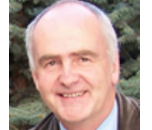

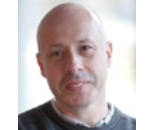

.jpg)



